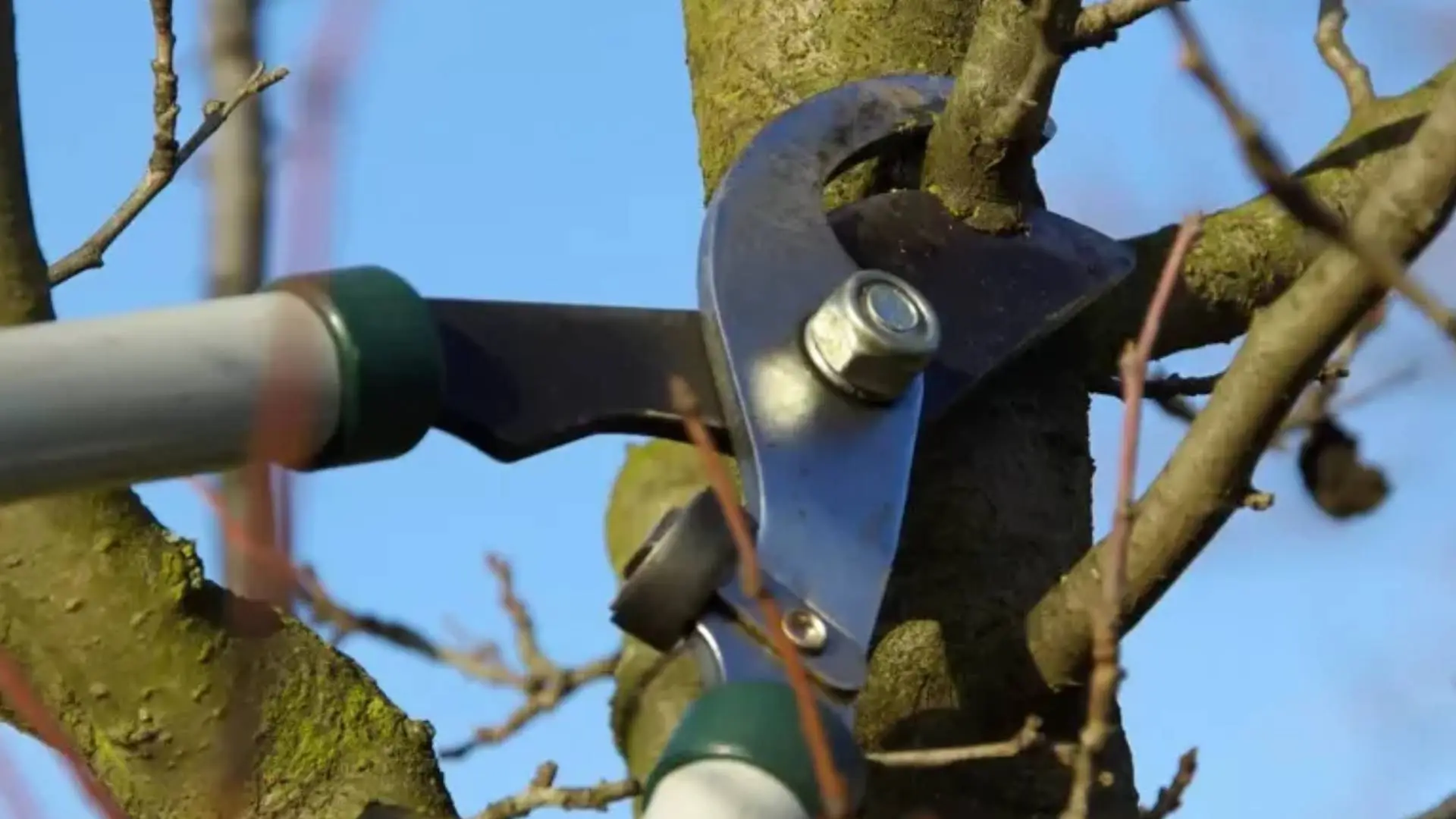Preservation Tree offers the “Why Prune in Winter” perspective while the Arbor Day Foundation offers tips and diagrams in a “How-to Guide” for Pruning Well.
According to Preservation Tree, less sap oozes during a winter pruning, which decreases the number of pests that are looking for host trees. Diseases such as fire blight, oak wilt and hypoxylon canker are less likely to spread during winter months.
Pruning deciduous trees (species that drop their leaves) in winter means one can better identify damaged, dying or dead branches. Leaves can camouflage problems. When a tree is bare, it is also easier to find the best place to make a cut.
Canopy restructuring is a useful process for urban trees that are outgrowing their space. Often, these trees are pruned the wrong way, leaving them damaged and looking badly. In winter, the full picture of a tree’s canopy is revealed and a clear plan can be made for restructure.
Trees pruned in the cooler months are able to heal more quickly from pruning cuts. As tree growth slows in winter, the uptake of sugars to the leaves for photosynthesis also slows. Pruning in winter allows the tree to direct energy toward healing its bark.
Prevent winter tree damage by scheduling pruning in early winter. The goal is to remove overgrown, hazardous branches before an ice storm hits. Proactive tree maintenance will greatly reduce damage to trees and homes when cold weather descends.
The Arbor Day Foundation lists tips and offers diagrams regarding “Keys to Good Pruning” shown below:
1. Inspect the tree from the top down.
2.Use the ? and ¼ Rules of Pruning:
- Never remove more than ¼ of a tree’s crown in a season
- Main side branches should be at least ? smaller than the diameter of the trunk.
- For most deciduous trees, don’t prune from the bottom any more than ? of the tree’s total height.
- Where possible, try to encourage side branches to form angles that form “10 o’clock” or “2 o’clock” angles with the trunk.
3. The tree should have a single trunk in most cases. Identify the best leader and later branches before you begin and remove defective parts before pruning for form.
4. Don’t worry about protecting pruning cuts. For aesthetics, you may feel better painting large wounds but it doesn’t prevent or reduce decay.
5. Keep tools sharp. One-hand pruning shears with curved blades work best on young trees.
6. For high branches use a pole pruner but, a big tree should be done by a professional arborist.
7. For larger branches, cut outside the branch bark and ridge collar (swollen area). Do not leave a protruding stub. If the limb is too small to have formed a collar, cut close.
8. When simply shortening a small branch, make the cut at a lateral bud or another side branch. Favor a bud that will produce a branch which will grow in desired direction- usually outward. The cut should be sharp and clean and made at a slight angle about ¼ inch beyond the bud.



Comments (0)
Thanks for your comment!
Thanks for your feedback! Your comments have been successfully submitted! Please note, all comments require admin approval prior to display.
Error submitting comment!
There is a problem with your comment, please see below and try again.